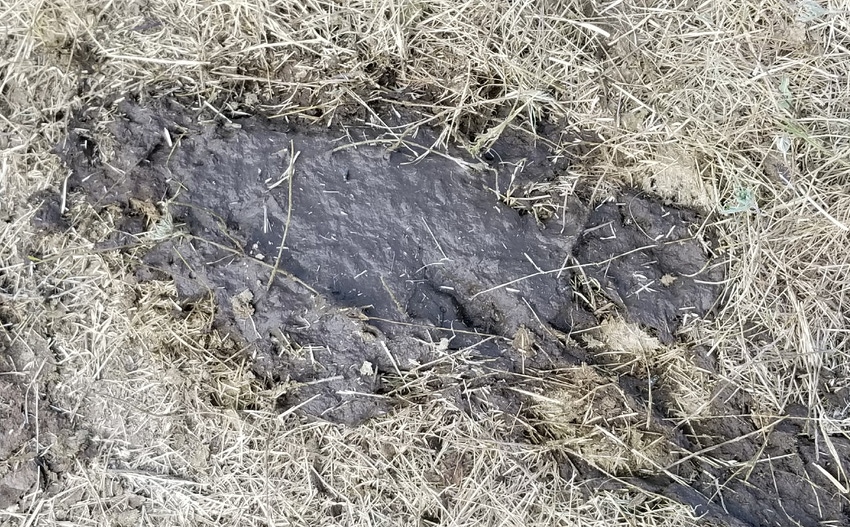
At 499 Ranch one of our major advantages of the past couple of decades is wintering cattle without hay.
I have helped a bunch of producers to reduce their hay usage but the handful that have eliminated equipment and the hay making routine have built their net worth. Most have doubled their profits, enjoyment and interest in growing their cattle enterprise. Several have purchased more land.
Shortening winter is a big deal and offers most producers the opportunity for their major profit increase. The major profit increaser is the severe reduction of cost while maintaining production. Increasing production while increasing costs (expenses) sucks.
Boom-and-bust management can effectively shorten winter. It can eliminate droughts and floods to a major extent. It can help you a bunch in the production of healthy cattle.
Alkalosis can be defined as a pathologic condition in which the cow or yearling is suffering from an increase of blood and tissue pH above 7.2, which is neutral. There is an excess of base, or alkalinity, in the body. Alkalosis is the opposite of acidosis, a condition which commonly comes from feeding too much grain. Alkalosis is a pasture disease, particularly in cool-season pastures, and acidosis is a confined-feeding-operation disease. Both are important.
Alkalosis occurs when the cattle eat or forage on an excess amount of highly nitrogenous food or plant material when there is a lack of carbohydrates (energy). It occurs really fast when cattle fed on forages fertilized with nitrogen fertilizer. More often alkalosis happens when cattle are grazing immature grasses or immature cereal grains in the late fall or spring and possibly winter. Real pretty grass, growing fast and green, equals probable alkalosis. High levels of free nitrogen from NPN and a lack of energy is a major culprit.
The free carbon plus hydrogen plus oxygen equals sugar, which is a carbohydrate, which equals energy. The hydrogen comes from the sun and from chlorophyll, with the help of magnesium in the green plant incorporates carbohydrates into the plant. Too much nitrogen together with lots of moisture and a lack of sunlight hours and warm temperatures often yields fast-growing grass that is excessive in nitrogen (often nitrates) and is lacking in energy. It is alkalotic. These plants lack maturity and are fast growing if moisture and nitrogen and temperatures are in the good amounts. Much of the nitrogen in the plant is free and is called non protein nitrogen (NPN). Like urea it is released quickly in the rumen and absorbs through the rumen wall in to the blood stream as ammonia. NPN is not protein. Ammonia is bad and a major deterrent to health. It is a major stress factor to cattle in the East.
Remember that cattle do not digest grass. The microbes in the rumen do the digestion. The microbes require energy in the forms of sugar, starch and fat to digest grass, and energy is normally deficient in the non-growing season. Microbes can convert NPN into protein if there is enough available energy. Immature plants tend to be NPN-rich and energy-poor.
Alkalosis is an important animal health problem. When grazing cattle in high-moisture environments that have been fertilized with good amounts of salt fertilizer such as ammonium nitrate, or broiler litter, it is involved as a major player in disease, poor performance and stress. Fast-growing green grass, especially cool-season grass, that looks really pretty can be deceptive.
The old rule is to never move hungry cattle onto pretty forage. Pretty stuff needs to be time grazed for a few hours in the afternoon after the cattle are mostly full. Plenty of brown is most always a really good addition to green. Diversity yields stability. Stability yields health.
Here are some management principles you need to think about to avoid or deal with alkalosis.
Manage for huge plant diversity and for calcium-rich soil. True protein development in the plant takes time and maturity.
Be very conservative with fertilizer and broiler litter.
Monitor urine pH in the field with pH paper (you want low 7s). Urine pH of 8 and especially 9 are dangerous.
Add some energy feed (like corn) if pHs are above 8. One pound of ground corn per 250 pounds of body weight in front of the new grass grazing herd on a daily basis sure helps. Spread the feed in piles and add lime so everybody gets some. Salt is important, too.
Mature cattle and cows with baby calves are most susceptible to alkalosis.
The meat from cattle eating high-NPN grass lacking in energy will be off flavored.
Cattle wintered on green cool-season grass and/or small grains for six or more weeks are most susceptible to alkalosis. Chemically fertilized pure stands are much more dangerous.
Highly mineralized organic soil produces forages that promote health. High moisture areas normally need added calcium/magnesium. If you cannot grow long-lived alfalfa, red clover and white clover, and you receive 30 or more inches of moisture, the chances are you need some additional calcium and a little magnesium.
It may seem like I beat boom and bust management to death. I likely sound like a broken record. My area on the Cumberland Highland Rim is a different game when compared to that Nashville basin that is only 30 miles to my west. Both are totally different from the High Plains. Southern Indiana is much different from central and northern Indiana. We need to pay attention and learn. The truth is that all our lands and ecosystems were created differently and are unique, yet all respond to this principle of management.
Nature works in boom and bust. Success starts with planning and execution early to mid-spring. Winter can be shortened. Cattle health can increase. Cost can be reduced.
About the Author(s)
You May Also Like






